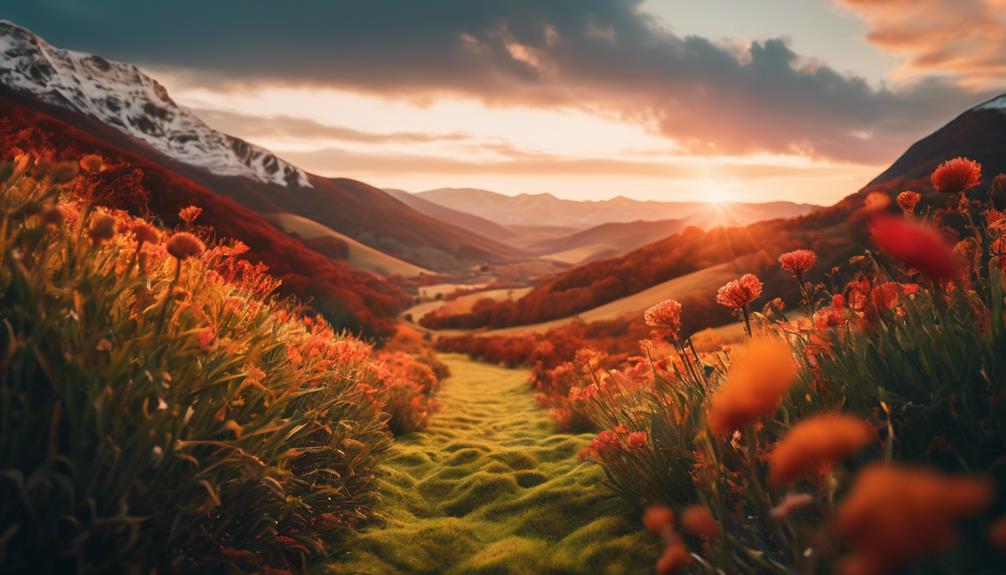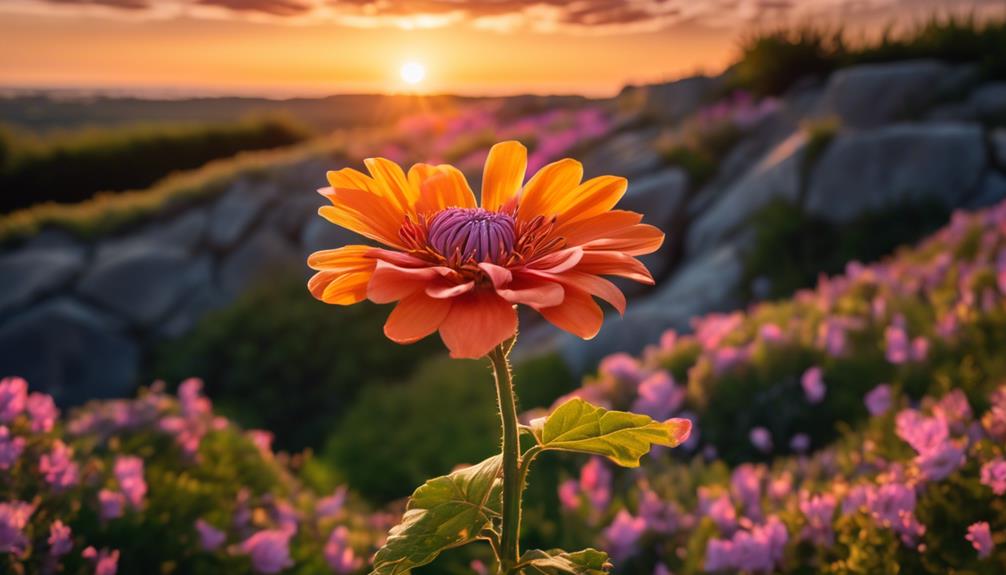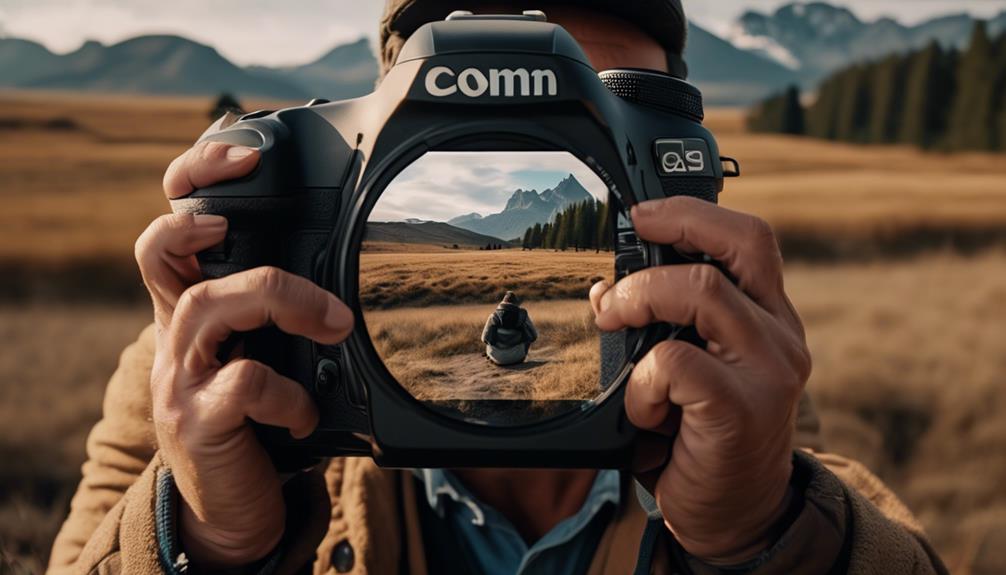Please note this post may contain affiliate links picked by me (Jay) that I have deemed may be of interest or relevant to you the reader of this.
These links do not affect the cost of the thing if you decide to purchase but i may get a little money if you choose to purchase.
For more information on my affiliate link policy click here.
I was strolling through a bustling city street, my camera in hand, when I spotted a vibrant mural adorning the side of a building. Intrigued by the colorful artwork, I raised my camera to capture the perfect shot.
Little did I know, there were simple composition rules that could have elevated my photo from ordinary to extraordinary. In this discussion, we will explore how the Rule of Thirds, Leading Lines, Framing Techniques, Symmetry and Patterns, and Depth and Perspective can transform your photos into captivating works of art.
So, whether you're a seasoned photographer or just starting out, get ready to unlock the secrets of composition and take your photography skills to the next level.
Key Takeaways
- The Rule of Thirds is a versatile composition rule that can be applied to any subject or genre.
- Leading lines can add depth, perspective, and dynamism to a photograph.
- Framing techniques using natural elements or other objects can enhance the composition and draw attention to the subject.
- Negative space can create balance, simplicity, and draw attention to the focal point of the photo.
Rule of Thirds
When I first learned about the Rule of Thirds, it completely transformed the way I approached composition in my photography. The Rule of Thirds is a fundamental principle in visual balance that divides the frame into a grid of nine equal parts, with two horizontal and two vertical lines intersecting. By placing key elements along these lines or at the intersections, you create a more dynamic and visually pleasing composition.
Imagine a photograph with a stunning landscape. If you were to place the horizon line right in the middle of the frame, the image might feel static and uninteresting. However, by applying the Rule of Thirds, you can position the horizon on either the top or bottom horizontal line, depending on what you want to emphasize – the sky or the foreground. This simple adjustment instantly adds depth and balance to the image, making it more captivating.
The Rule of Thirds isn't just limited to landscapes; it can be applied to any subject or genre. Whether you're capturing a portrait, still life, or even street photography, this rule remains a powerful tool to create compelling compositions. By placing your subject along one of the vertical lines, you draw the viewer's eye into the frame and create a sense of movement.
It's important to note that the Rule of Thirds isn't a strict rule but rather a guideline. It's meant to be broken and tweaked to suit your creative vision. Experiment with different placements and see how they affect the overall composition. Remember, innovation often arises from pushing the boundaries and challenging the norms.
Leading Lines
After mastering the Rule of Thirds and creating visually balanced compositions, it's time to explore another powerful composition technique: leading lines. These lines draw the viewer's eye into the image and create a sense of depth and movement.
Here are four ways leading lines can enhance your photos:
- Guiding the viewer's gaze: Leading lines act as visual pathways that guide the viewer's eyes towards the main subject of the photo. Whether it's a straight road, a winding river, or a row of trees, these lines help create a sense of direction and focus.
- Creating depth: By incorporating converging lines, you can give your photos a three-dimensional feel. When lines converge towards a vanishing point, it creates a sense of depth and perspective, making your images more immersive and captivating.
- Adding dynamism: Leading lines can also add a sense of movement and energy to your photos. By capturing lines that curve, twist, or diagonally cut through the frame, you can introduce a dynamic element that engages the viewer and adds visual interest.
- Enhancing composition: Leading lines can be used to improve the overall composition of your photos. They can be used strategically to create balance, frame your subject, or add symmetry to the image. By incorporating leading lines, you can create a well-structured and visually pleasing photograph.
Incorporating leading lines into your compositions allows you to create visually compelling and innovative photographs. So, next time you're out capturing images, look for those roads, fences, or natural elements that can lead your viewer's eyes into the heart of your photo. Experiment with different angles and perspectives, and watch your photos come to life with the power of leading lines.
Framing Techniques
Framing techniques, a crucial aspect of composition, allow photographers to creatively enhance their images by using various elements to frame their subjects. It's like putting a beautiful frame around a masterpiece, drawing attention to the subject and adding depth and context to the overall composition. In this article, I will share some creative framing ideas and discuss how to effectively use negative space to create visually stunning photographs.
Table: Creative Framing Ideas
| Technique | Description | Example Image |
|---|---|---|
| Natural Frames | Utilize natural elements such as trees, archways, or windows to frame your subject |  |
| Leading Lines | Incorporate leading lines to guide the viewer's eye towards the subject |  |
| Overlapping | Use overlapping elements in the foreground to create a sense of depth and dimension |  |
| Framing with Light | Use light and shadows to frame your subject, creating a dramatic and captivating composition |  |
| Reflections | Utilize reflections in water or mirrors to create a unique and visually appealing frame |  |
One effective technique to consider is using negative space effectively. Negative space refers to the areas around and between the main subjects in your photograph. By intentionally leaving empty or blank spaces, you can create a sense of balance and simplicity, allowing your subject to stand out. This technique not only adds a modern and minimalist touch to your photos but also draws attention to the subject, making it the focal point of the composition.
Symmetry and Patterns
Symmetry and patterns, a mesmerizing combination that adds a captivating element to your photographs. When it comes to capturing stunning images, incorporating symmetry and patterns can take your photography to the next level. Here are four reasons why you should consider incorporating symmetry and patterns into your compositions:
- Symmetry in Nature:
Nature is full of symmetrical wonders, from the intricate patterns on a butterfly's wings to the perfectly mirrored reflections on a calm lake. By capturing these symmetrical elements in your photographs, you can create visually striking and harmonious images that draw the viewer's attention.
- Repetition in Architecture:
Architecture is another realm where symmetry and patterns are abundant. From the repeating arches of a grand cathedral to the geometric patterns of a modern skyscraper, incorporating these elements can add a sense of order and balance to your photographs. The repetition of shapes or patterns can create a visually pleasing rhythm that engages the viewer's eye.
- Aesthetic Appeal:
Symmetry and patterns have an inherent aesthetic appeal that can make your photographs visually pleasing. The balance and order they bring to an image can create a sense of calmness and harmony, making it more enjoyable to look at. By consciously incorporating symmetry and patterns into your compositions, you can create images that aren't only visually striking but also emotionally captivating.
- Creativity and Innovation:
Incorporating symmetry and patterns into your photography allows you to experiment and push the boundaries of your creativity. By seeking out unique patterns in everyday objects or finding symmetrical elements in unexpected places, you can create photographs that stand out and capture the viewer's attention. Embracing symmetry and patterns can spark innovation and help you see the world through a different lens.
Incorporating symmetry and patterns into your photographs can elevate your compositions and create visually stunning images. So, next time you're out capturing the world with your camera, keep an eye out for the mesmerizing combination of symmetry and patterns that nature and architecture have to offer.
Depth and Perspective
As I continue exploring the fascinating world of composition, I find myself drawn to the captivating subtopic of depth and perspective. This aspect of photography allows us to create images that not only capture a moment but also transport the viewer into the scene, making them feel as though they're a part of it.
One way to achieve depth and perspective is by creating a sense of scale. By including elements of different sizes in your composition, you can give the viewer a reference point to understand the dimensions of the scene. This can be done by incorporating objects of varying sizes, such as a person standing next to a towering building, or by using leading lines that converge into the distance, giving the impression of depth.
Another technique is to use foreground and background elements to add depth to your photos. By placing objects in the foreground, you can create a sense of depth and make the viewer feel as though they're looking through a window into the scene. This can be achieved by framing your subject with elements such as trees or archways, which not only add depth but also provide context to the main subject.
Depth and perspective are powerful tools in photography, allowing us to create images that aren't only visually appealing but also captivating. By using techniques such as creating a sense of scale and incorporating foreground and background elements, we can take our photos to new heights, capturing moments that truly transport the viewer into the scene.
Frequently Asked Questions
How Can I Effectively Combine Multiple Composition Rules in a Single Photograph?
To effectively combine multiple composition rules in a single photograph, I focus on balancing elements and using the rule of thirds and leading lines.
By carefully arranging the different elements in my frame, I create a harmonious composition that captures the viewer's attention.
The rule of thirds helps me place key subjects off-center, while leading lines guide the viewer's eye through the image, adding depth and dynamism.
This combination of composition rules results in a captivating and innovative photograph.
Are There Any Specific Composition Rules That Work Better for Landscape Photography?
When it comes to landscape photography, there are certain composition rules that can really make your photos stand out. By following these guidelines, you can create stunning images that capture the beauty of nature.
From the rule of thirds to leading lines, there are plenty of techniques that can help you compose your shots in a way that's visually appealing.
Can I Apply These Composition Rules to Other Forms of Visual Art, Such as Painting or Graphic Design?
Applying composition rules to abstract art can lead to exciting and dynamic creations. By exploring the use of composition rules in web design, designers can create visually appealing and user-friendly websites. These rules, such as the rule of thirds or leading lines, can be adapted and applied to various forms of visual art.
They provide a framework for organizing elements and creating balance and harmony. So, whether you're a painter, graphic designer, or photographer, experimenting with composition rules can elevate your work to new heights of creativity.
Are There Any Composition Rules That Can Help Me Create a Sense of Movement or Action in My Photographs?
Creating a sense of movement and action in photographs can be achieved through dynamic composition. By using techniques such as leading lines, diagonal lines, or framing, you can guide the viewer's eye and create a visual flow.
Additionally, incorporating elements like motion blur or freezing the action can further enhance the sense of movement. Experiment with different angles and perspectives to add depth and excitement to your photos.
How Can I Break the Traditional Composition Rules to Create Unique and Visually Striking Images?
Breaking traditions in photography composition can lead to truly impactful and visually striking images. By challenging the conventional rules, I've discovered new ways to capture attention and create a unique visual experience.
Experimenting with unconventional angles, framing, and perspectives can add an unexpected twist to your photographs. Embrace your creativity and let your imagination guide you.
Conclusion
In conclusion, mastering the composition rules of photography can truly transform your photos from ordinary to extraordinary. By incorporating the Rule of Thirds, leading lines, framing techniques, symmetry and patterns, and depth and perspective, you can create visually stunning images that captivate the viewer.
Imagine a photo with a perfectly placed subject, leading lines guiding your gaze, and a balanced composition that draws you in. With these simple rules, you have the power to boost your photos and tell a compelling story through your lens.


